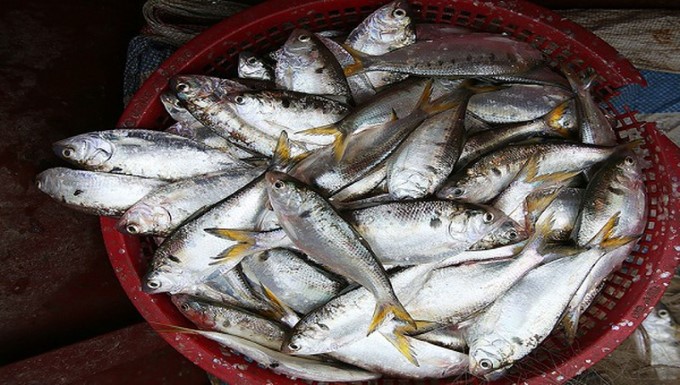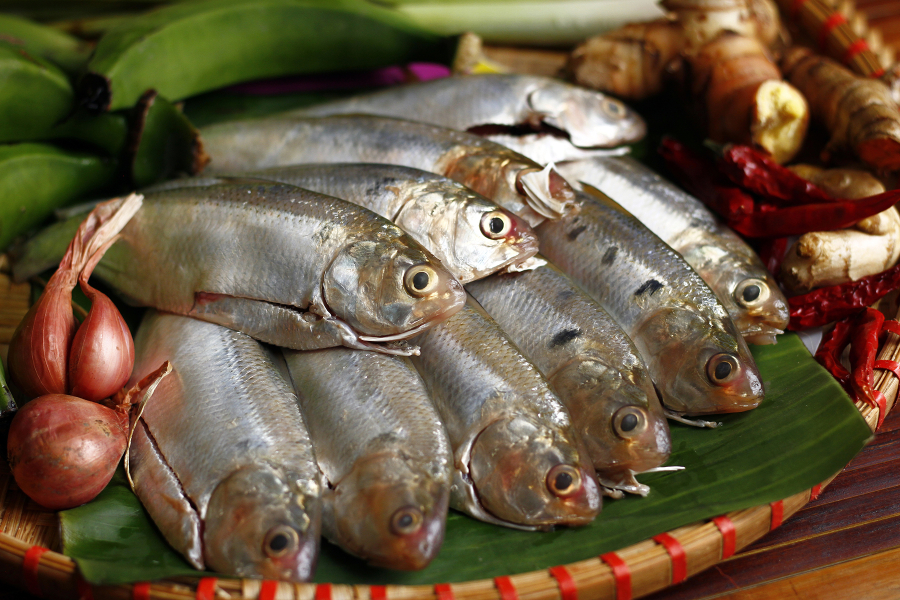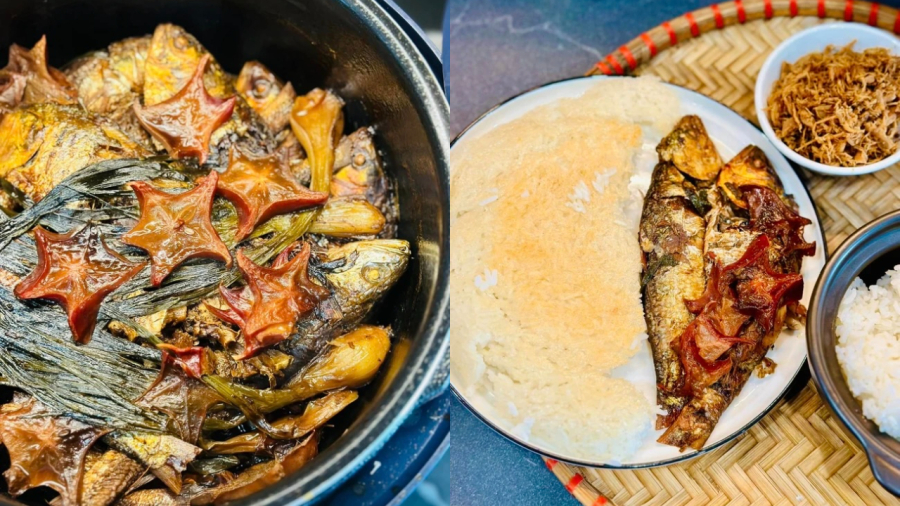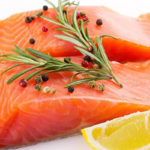Ca moi is still known for its delicious flavor and high nutritional content. Despite having many bones, ca moi is still loved by many people. Nowadays, ca moi has become a specialty dish and a source of ingredients for many high-end dishes.
There are many different species of ca moi, living in various environments. This also affects the nutritional content of ca moi.
This is a very fatty, savory fish with fragrant meat, fried, grilled or cooked in sour soup. Because fish have many bones, the only dish that is suitable for children to eat is braised fish. You can learn how to make braised ca moi with sour starfruit in a pressure cooker as described below.

Ingredients for braised fish
– Sea-ca moi
– Sour starfruit
– Onion, spring onion, ginger, ginger leaves, tomatoes

Cleaning the ca moi
Cleaning the ca moi before processing is important. Very simply, you just need to wash the fish under cold water to wash away any dirt clinging to the fish.
Then you use a sharp knife to scrape off the fish scales. Cut off the tail and clean the gills, remove the fish guts.
To remove the fishy smell of sea-ca moi, you can rub the fish body with a little salt and lemon or lime juice, then rinse it thoroughly with rice water. Rice water will help effectively remove the fishy smell of fish. If you want it cleaner, you can rinse it again with diluted white wine. White wine is also one of the common ways to remove the fishy smell of fish.

How to braise ca moi
– First, marinate the fish with fish sauce, salt, pepper, sugar water, and other spices including ginger, whole spring onion and ginger leaves.
– Slice the sour starfruit.
– After marinating the fish for about 1-2 hours, bring it to a simmer, when the pot boils, add water to cover the fish and cover it.
– If you are using a pressure cooker, choose the stew mode. After stewing, wait for it to cool down, then release the steam valve naturally and open the lid, heat it on normal mode until it boils and the water dries up.
“3 Simple Steps to Remove the Fishy Smell of Salmon”
Are you looking for ways to get rid of that unpleasant fishy smell associated with salmon dishes? If so, we have some useful tips that can help you make a delicious and healthy meal without the fishy odor. Keep reading to learn our easy-to-follow suggestions for removing the odorous smell from salmon dishes!



































